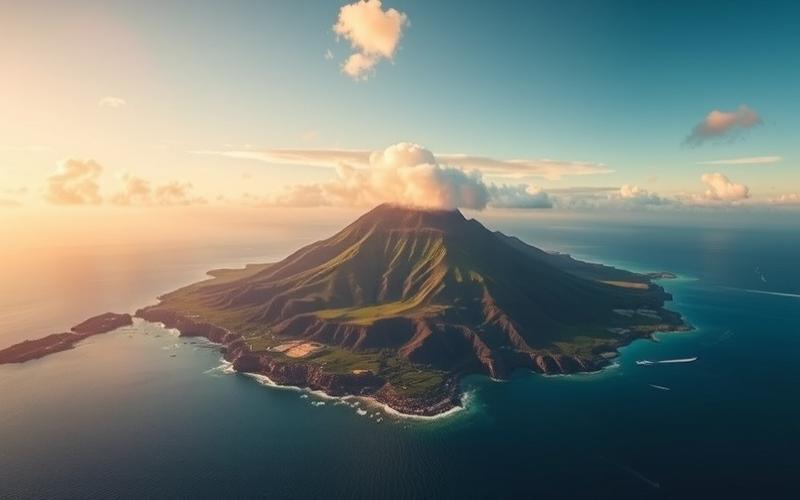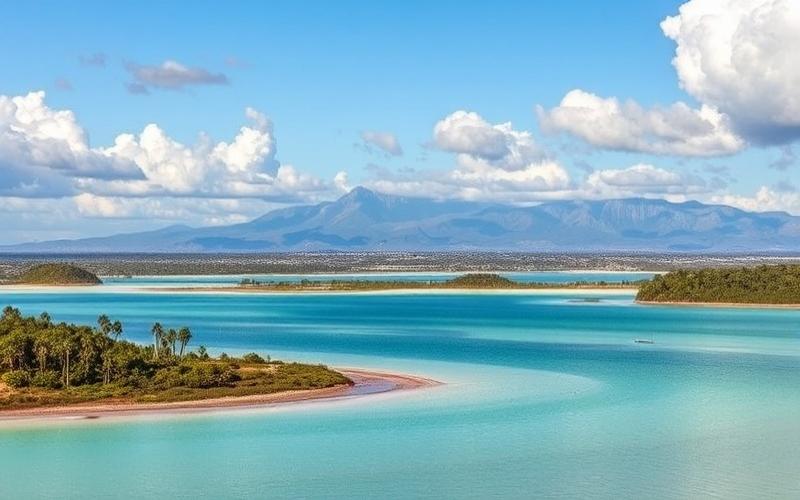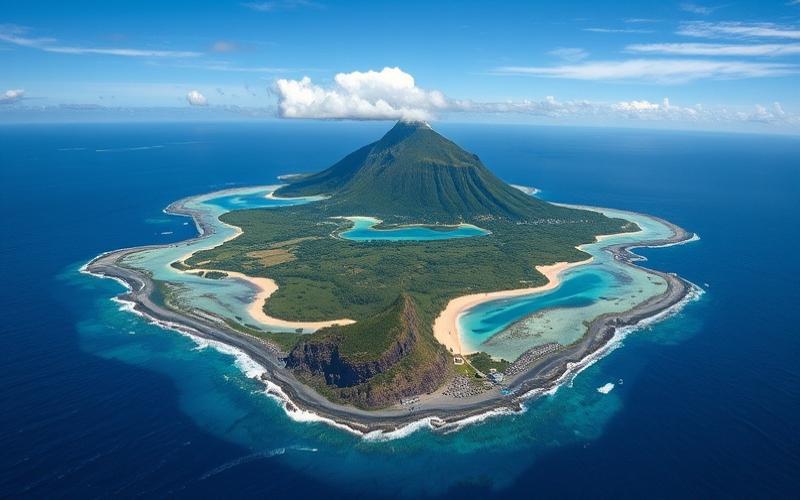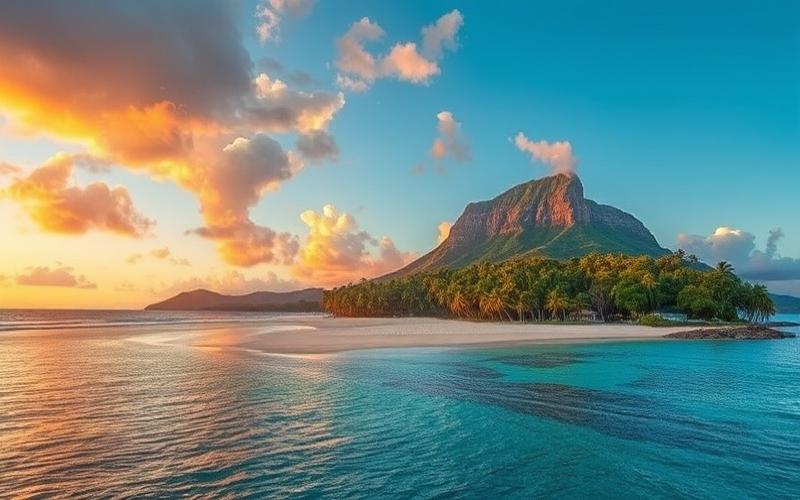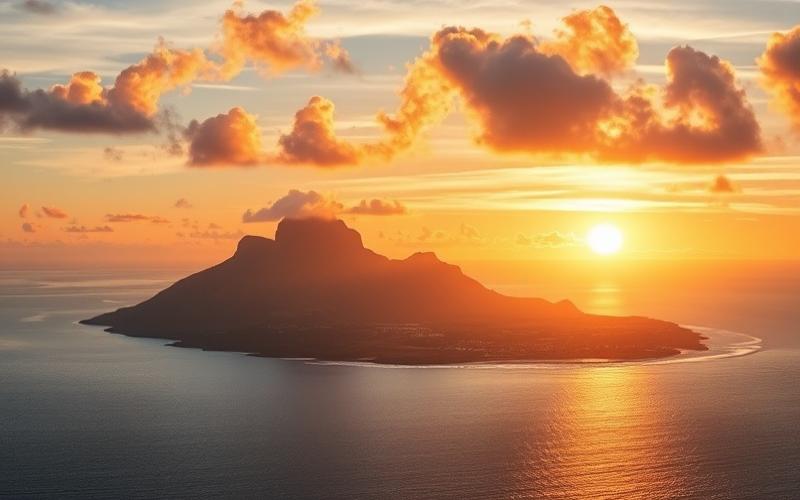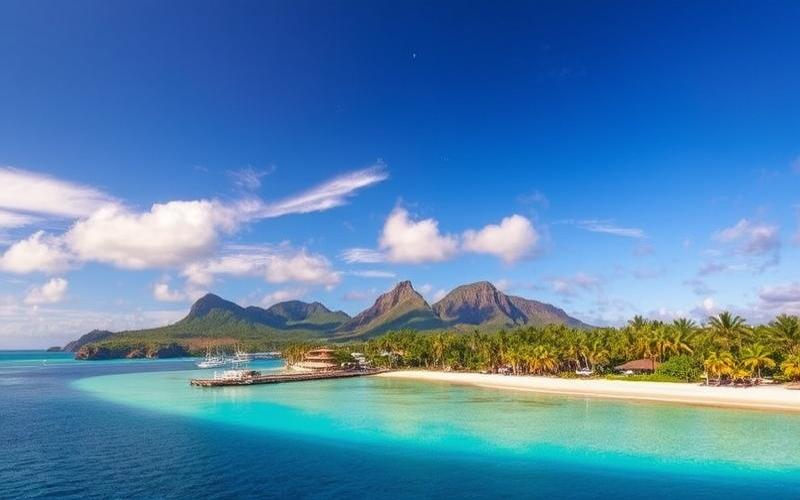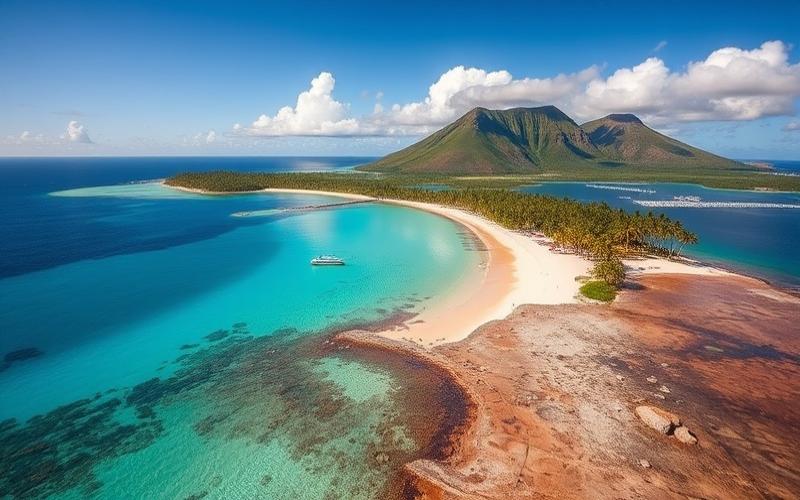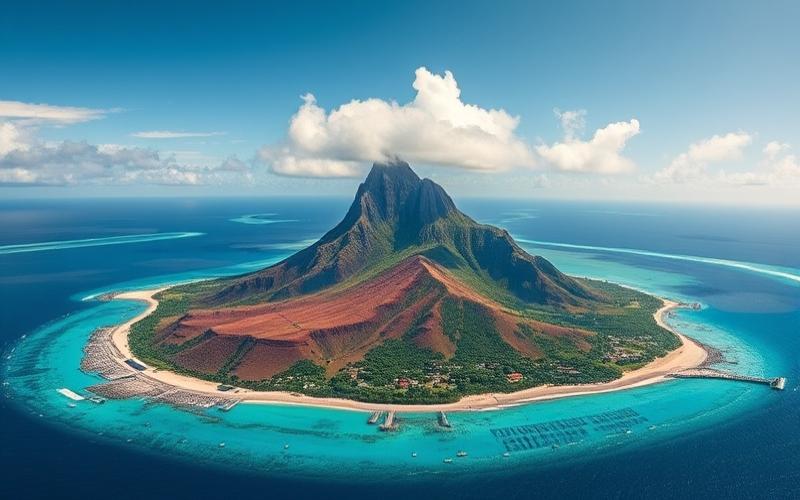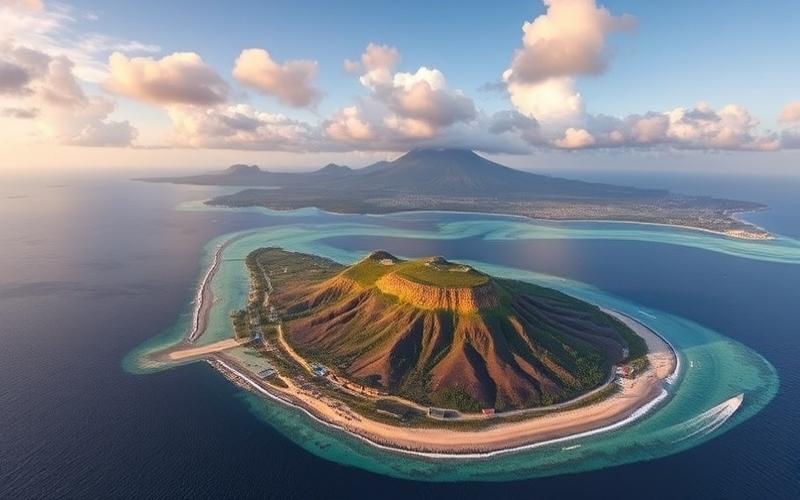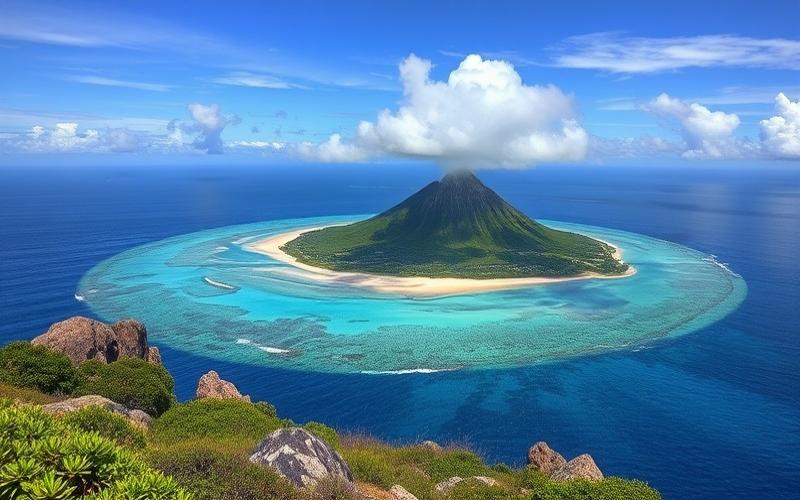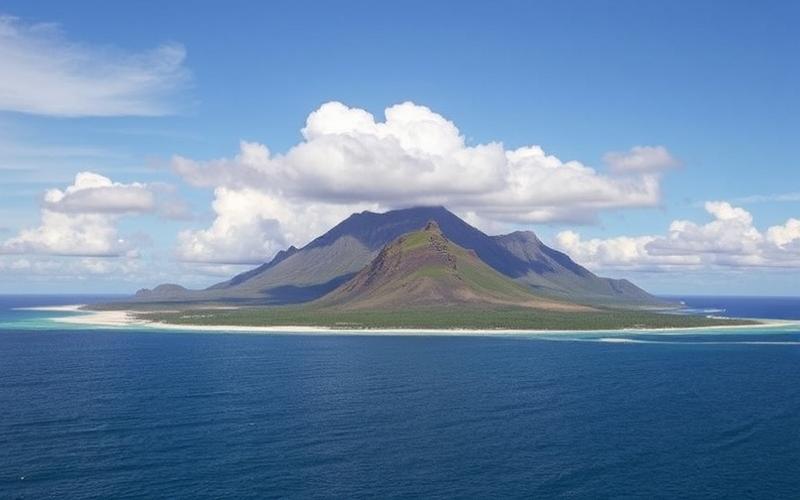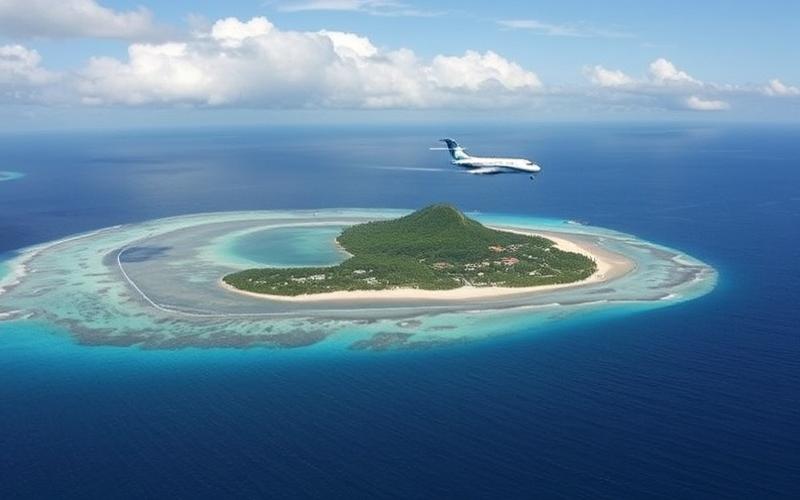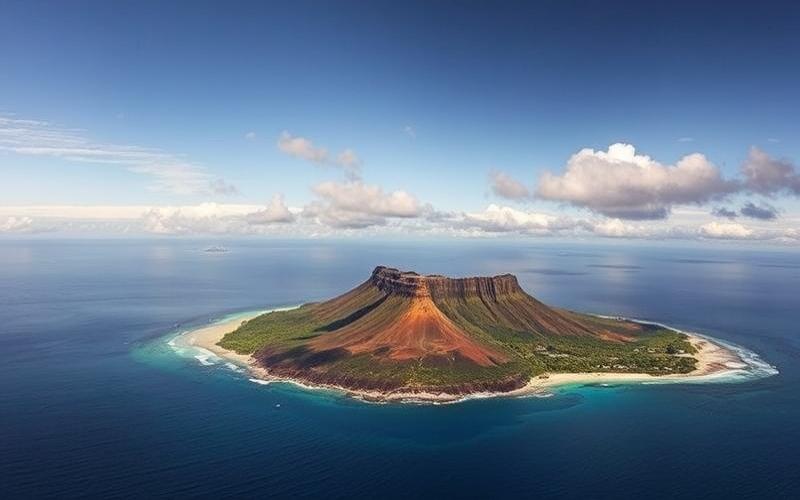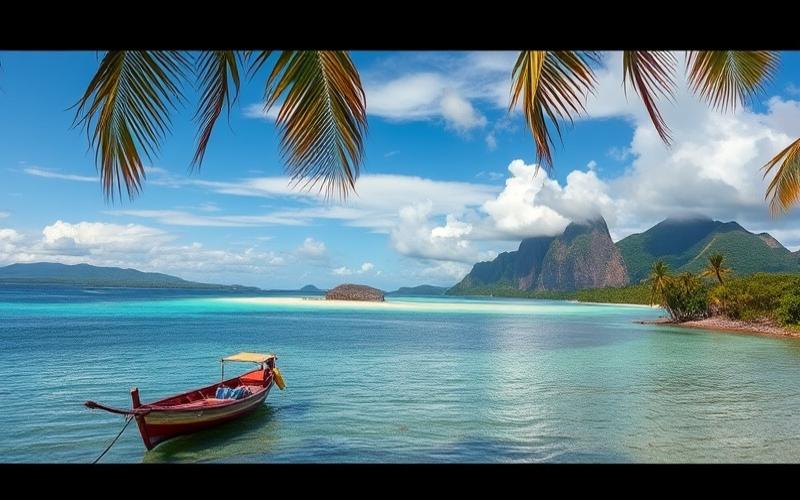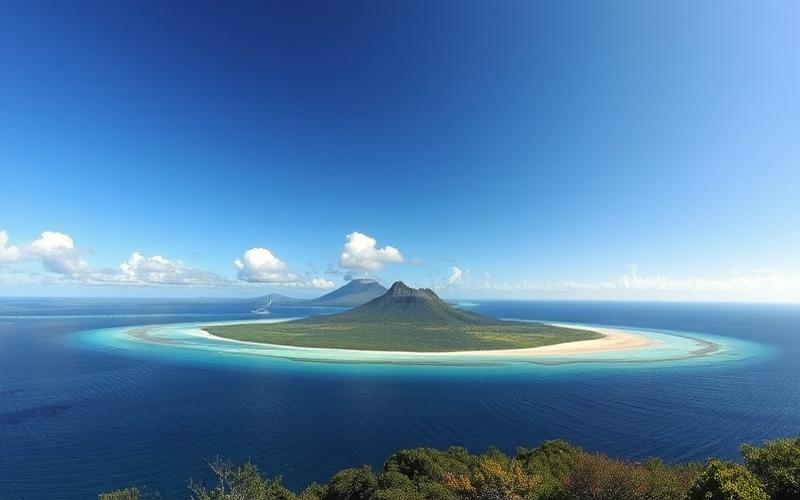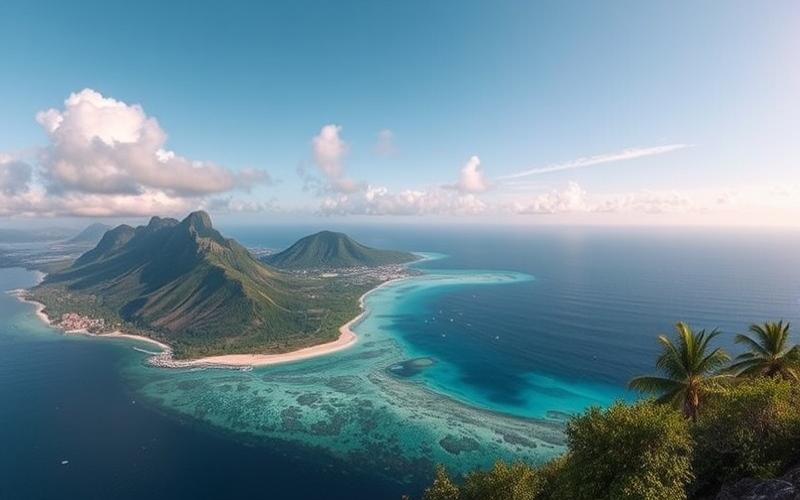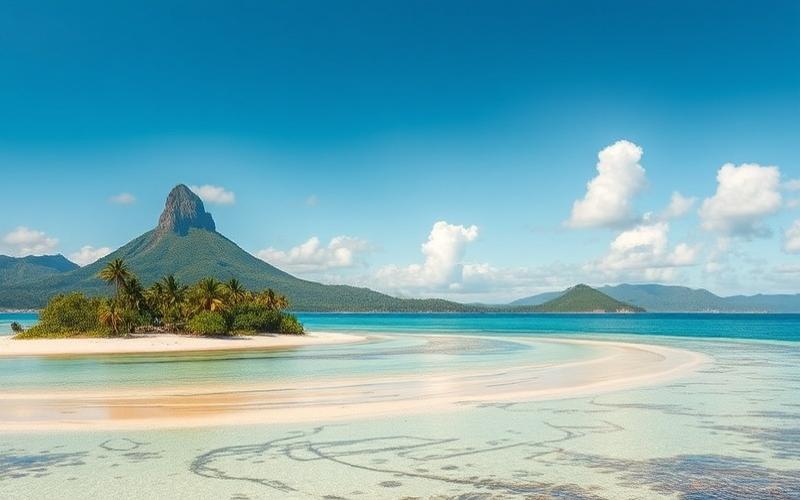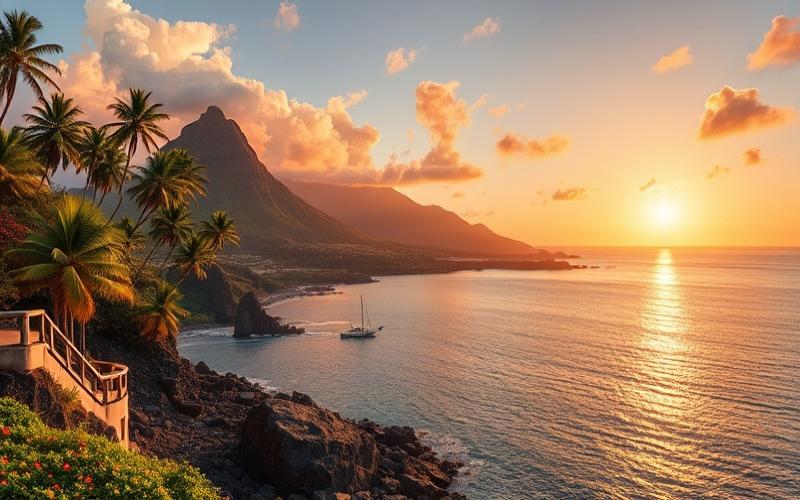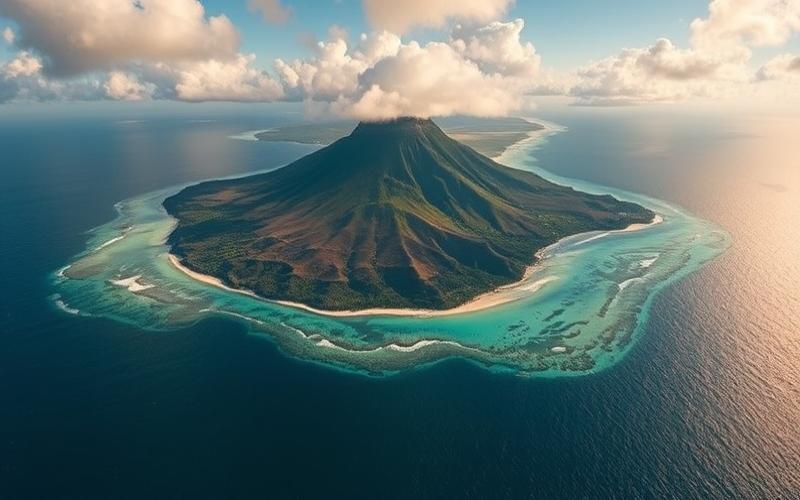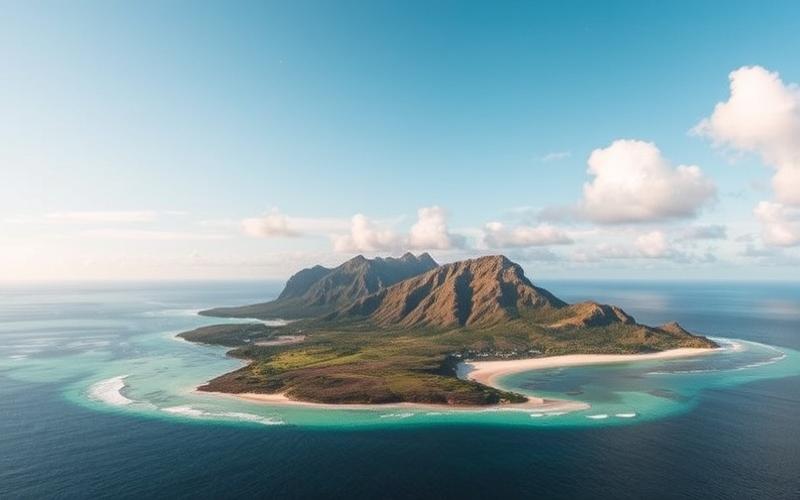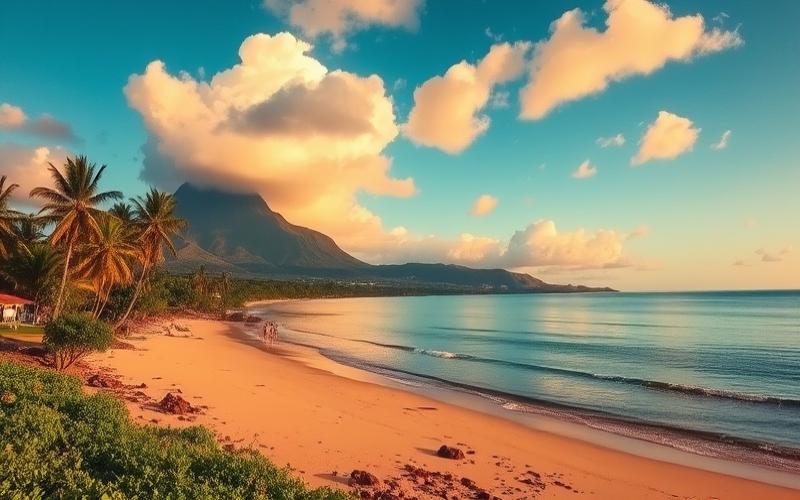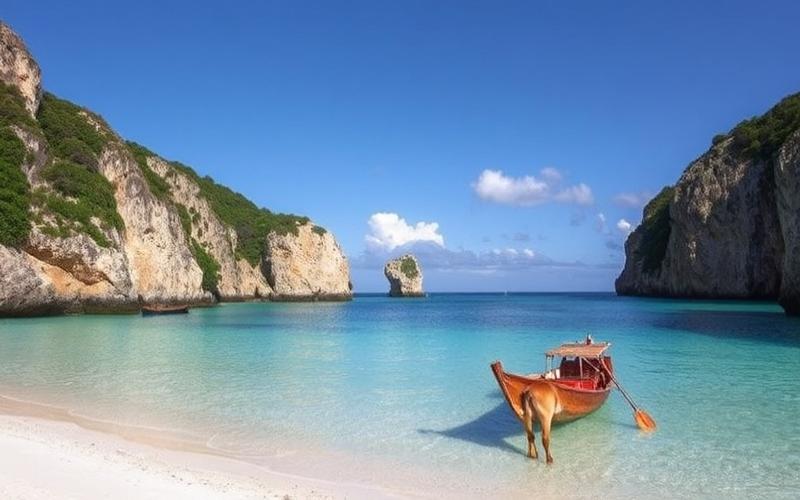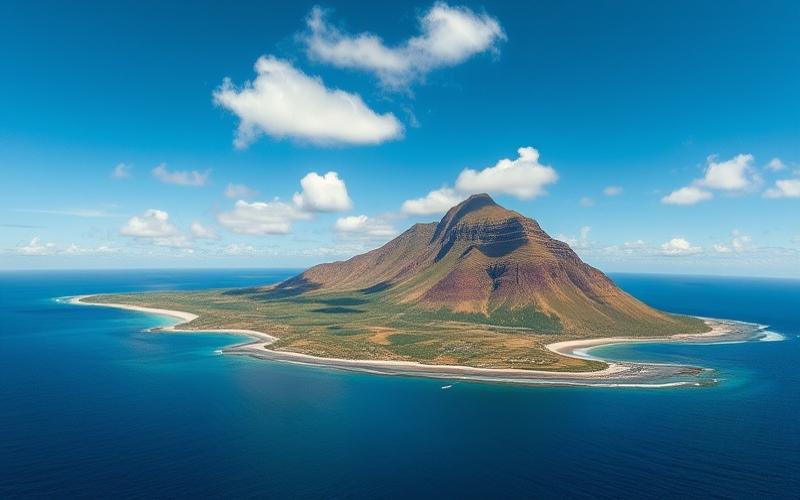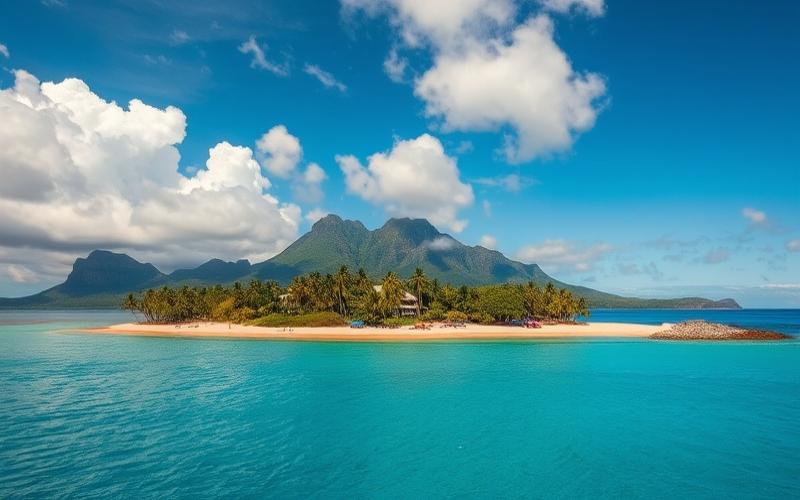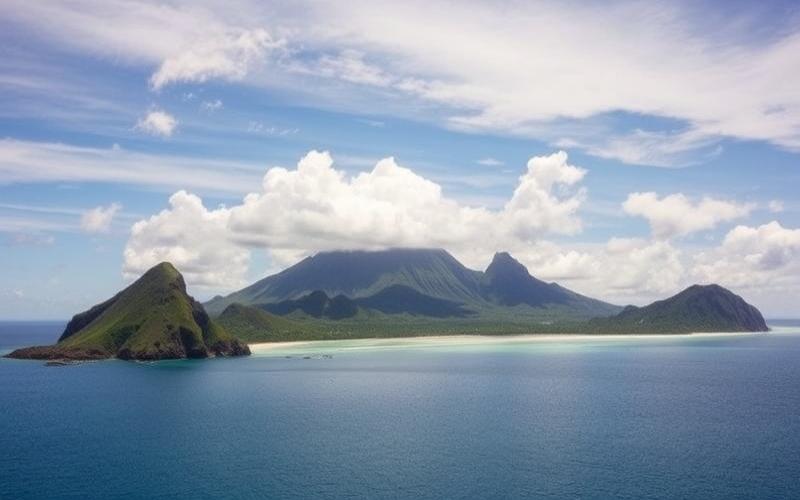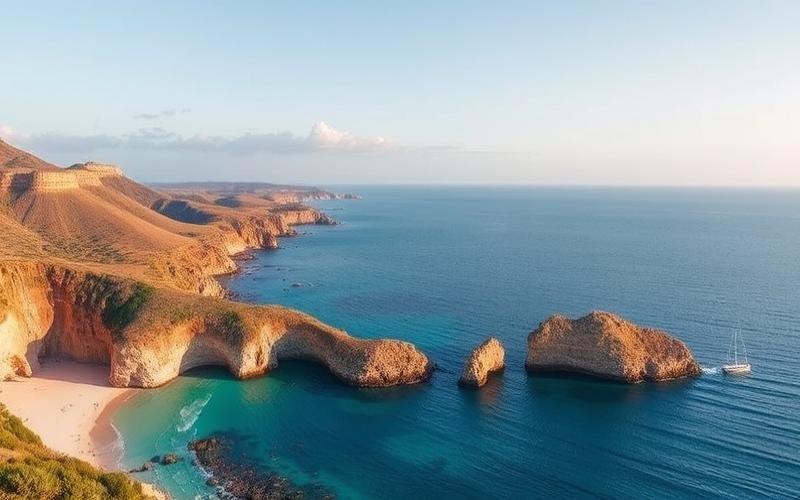
 Published on and written by Cyril Jarnias
Published on and written by Cyril Jarnias
Nestled in the heart of the Indian Ocean, Mauritius attracts visitors not only for its paradise beaches but also for its cultural richness, where artist villages are multiplying. These creative havens are emerging as genuine talent incubators, drawing tourists and collectors in search of authenticity.
But this artistic effervescence raises a crucial question: is it a sincere cultural investment dedicated to promoting and preserving local art, or does it align more with an economically profitable strategy aimed at boosting tourism and commercial profits?
This article delves into the heart of this dilemma, analyzing the motivations and impacts of this rapidly expanding phenomenon.
Artist Villages: A Cultural Dynamo for Mauritius
Artist villages in Mauritius play a driving role in the region’s cultural dynamism by providing spaces for creation, interaction, and dissemination for artists and the public. They serve as essential hubs for artistic exchange that foster cultural vitality while preserving local identity.
Local Artistic Initiatives
- Free workshops for children and teenagers, such as those led by Jean-Yves l’Onflé in Tamarin, which encourage the emergence of young talents.
- Creation of dedicated spaces like the Tamarin Arts Centre, a catalyst for new ideas and a dynamic venue for local artists.
- Proliferation of artisanal shops (jewelry, clothing, decorative items) in villages like Ruisseau-Créole or Vanilla Connect.
Promotion of Mauritian Art and Culture
- Regular organization of exhibitions showcasing both local creations and those from international collaborations.
- Permanent display of works by artists from the Muholi Art Institute, as well as the “Earth from Above” photography exhibition aimed at raising awareness about the beauty of Mauritius’ natural heritage.
- Promotion of artisanal craftsmanship with increased visibility for local creators through a dense network of dedicated commercial spaces.
| Type of Initiative | Description | Cultural Impact |
|---|---|---|
| Workshops/Classes | Free artistic training | Intergenerational transmission |
| Permanent Exhibitions | Local & international works | Intercultural dialogue |
| Artisanal Shops | Direct sale of creations | Local economic support |
Impact on Regional Creative Development
The villages stimulate collective creativity through:
- A rich annual program (concerts, festivals, conferences).
- Networking between local and international artists via residencies or collaborative events.
- A diverse offering allowing both Mauritian audiences and foreign tourists to immerse themselves in the island’s cultural richness.
International Artistic Collaboration
Residencies regularly host creators from around the world. This diversity fosters:
- Technical and stylistic exchange,
- Emergence of hybrid projects,
- Global recognition of Mauritian artistic heritage.
Perception by Residents & Tourists
Local communities see these initiatives as vectors for social empowerment, while visitors discover “another Mauritius”—authentic and inspiring.
Workshops – Exhibitions – Cultural Events: Key Roles
These foundational activities ensure:
- Living transmission of heritage
- Continuous social engagement
- Strengthening of identity
Effects on Community Engagement & Social Cohesion
- Promote intergenerational encounters around collective projects
- Encourage citizen volunteering during events
- Generate shared pride in regional cultural influence
In Summary
Artist villages represent an essential engine for preserving and continually renewing Mauritian culture; they are both sanctuaries and incubators where tradition rhymes with innovation.
Good to Know:
Artist villages in Mauritius play a key role in revitalizing the region’s culture by providing a platform for local artistic initiatives such as workshops, exhibitions, and cultural events that celebrate Mauritian art and culture. They foster collaboration between local and international artists, creating a space for exchange conducive to innovation and creativity. These villages are viewed positively by residents and tourists, who appreciate their ability to preserve heritage and strengthen the island’s cultural identity. By regularly organizing cultural activities, they encourage community engagement and contribute to strengthening Mauritian social fabric. For example, public exhibitions allow people to discover unique artworks while promoting the island’s cultural diversity.
Investing in Artistic Real Estate: A Winning Bet?
Investment in artistic real estate in Mauritius is attracting increasing attention, particularly with the rise of innovative projects around artist villages and cultural hubs. This type of investment carries both promises and challenges.
Advantages
- Growth in the local market: The Mauritian real estate sector has seen significant price increases in recent years, especially in dynamic and attractive areas, paving the way for interesting appreciation for properties located in or near artist villages.
- Property value appreciation: Neighborhoods with a strong cultural or artistic dimension often benefit from increased appeal, particularly among expatriates, tourists, and art enthusiasts. This translates to sustained demand for unique properties (studio-galleries, creative lofts) likely to generate higher rental yields.
- Opportunities linked to emerging trends:
- Eco-friendly projects incorporating shared green spaces and sustainable materials
- Initiatives promoting biodiversity and cultural inclusion
- Technological integration (solar panels, natural ventilation)
- Tax incentives: The Mauritian tax system remains favorable to investors, notably with a relatively low fixed rate on rental income and an absence of property tax on certain cultural or educational projects.
Disadvantages
- Fluctuation in artistic demand: Interest in artistic real estate heavily depends on local cultural dynamism. If a village loses appeal or if the cultural calendar wanes, property values may stagnate or even decline.
- Uncertain return on investment: Profitability isn’t always immediate; it can take several years before cultural influence translates into significant increases in price per square foot or rental yield.
- Operational challenges:
- Difficulty finding specialized tenants (resident artists)
- Additional costs related to heritage preservation or required specific amenities
| Advantages | Disadvantages |
|---|---|
| Potential for increased value | Fluctuating demand |
| Tourist/cultural appeal | Slow return on investment |
| Favorable taxation | High specific costs |
| Sustainability & innovation | Risk tied to local dynamism |
Emerging Trends
- Sustainable development integrated into new artistic neighborhoods
- Collaboration between real estate developers and artistic collectives to create hybrid spaces blending residential life and creative areas
- National events like the Real Estate & Construction Convention at Caudan Arts Centre that highlight these types of opportunities
Concrete Examples & Local Stories
Some villages like Tamarin adopt a strong eco-cultural positioning where local artists exhibit year-round; Grand Baie regularly hosts temporary exhibitions attracting foreign collectors. These hubs have enabled several pioneering investors to double or even triple their property’s initial value after a few successful tourist seasons.
Lessons Learned:
Betting solely on artistic potential without solid analysis of the local economic fabric exposes one to setbacks during off-peak periods.
Diversifying rental sources (pop-up galleries, shared workshops) however helps cushion fluctuations while capitalizing on each seasonal peak.
This overview highlights a promising yet demanding sector where success rhymes with strategic patience and constant adaptation to local cultural cycles.
Good to Know:
Investing in artistic real estate in Mauritius offers notable advantages, such as the appreciation of properties located in burgeoning artist villages, where the local art market shows significant growth. These villages, like Le Morne or Mahébourg, attract tourists and buyers, increasing real estate demand. However, there are challenges, including fluctuations in art interest that can affect investment stability, as well as uncertainties regarding return on investment. Emerging trends, such as increased digitization of the art market, offer new opportunities, and specific tax incentives for cultural investments can make these projects more attractive. Success stories in certain villages demonstrate that, despite risks, a well-planned strategy can lead to rewarding financial and cultural outcomes.
Creative Eco-Villages: A New Trend in Mauritius
Creative Eco-Villages in Mauritius: Art, Sustainability, and Local Economy
In Mauritius, initiatives are emerging to combine artistic creation and sustainable development within genuine creative eco-villages. These innovative communities bring together artists, local artisans, and residents around an environmentally respectful lifestyle focused on valuing heritage.
List of Local Initiatives Blending Art and Sustainability:
- La Vieille Cheminée (Chamarel): An ecological agricultural estate offering lodge accommodations built with local materials, promoting Creole style, and cuisine based on fresh produce from the garden. The venue regularly hosts cultural events highlighting Mauritian artists.
- La Meule Eco Village (Bambous-Virieux): A family-run ecological farm also serving as a hosting space for artistic workshops, temporary exhibitions, or creative residencies. An inspiring model that attracts both visitors and young island talents.
- TOIT POUR TOUS Eco-Village Project: An initiative supported by local NGOs and Rotary Clubs aimed at constructing ecological housing using local wood or recycled plastic bricks. Several committed architects collaborate on designing spaces dedicated to collective cultural activities.
Typical Profiles of Involved Artists:
- Traditional artisans specializing in woodwork, natural textiles, or ceramics
- Contemporary painters drawing inspiration from the Mauritian landscape
- Musicians blending local rhythms with global influences during on-site jam sessions
- Architects committed to responsible construction
Comparative Table of Adopted Ecological Practices:
| Ecological Practice | Implemented Example |
|---|---|
| Bioclimatic Construction | Wood/local houses & recycled bricks |
| Sustainable Agriculture | Organic gardens/food self-sufficiency |
| Collective Management | Shared spaces & participatory decision-making |
| Recycling & Circular Economy | Internal units for waste treatment |
| Biodiversity Promotion | Planting endemic trees/community gardens |
Community Functioning:
Artistic communities operate on a participatory model where each member (resident artist or visitor) contributes to collective tasks: organizing public workshops, communal agro-ecological maintenance, weekly cultural activities… Major decisions are made during regular general assemblies.
Attractiveness for Creators and Tourists:
Eco-villages offer artists a conducive environment for experimentation through proximity to nature and increased visibility among tourists eager to discover an authentic Mauritius. Visitors benefit from:
- Immersive workshops led by the artists themselves
- Live impromptu performances right in the heart of the village
- Ethical artisanal products sold directly on-site
Local Economic Benefits:
- Local employment generated (construction/activities/direct sales)
- Tourist diversification beyond classic hospitality
- Potential export of original works created on-site
Financial Challenges & Institutional/Private Support:
Initial funding often comes from private patronage (international NGOs like TOIT POUR TOUS), supplemented by fundraising from public partners such as Rotary Clubs or Mauritian tourism institutions. Some projects also benefit from logistical/legal support offered by local associations specializing in ecology or social housing.
Profitability Analysis & Cultural Impact:
The trend demonstrates real potential to combine economic viability—through high-end responsible tourism—with cultural preservation: these villages position Mauritius as a pioneering destination where artistic experience rhymes with environmental commitment. This also fosters intergenerational transmission of skills while enriching the national tourism offering.
This movement already strongly contributes to international cultural influence while sustainably reinventing the relationship between art, collective living, and the Mauritian territory.
Good to Know:
In Mauritius, creative eco-villages are emerging as innovative hubs where art and sustainability harmoniously converge. Local initiatives, such as the Chamarel Eco-Village project, integrate ecological practices like renewable energy and permaculture, attracting artists with varied profiles, from visual artists to musicians. These communities operate through self-management and open to the public via collaborative workshops and residencies, attracting not only creators but also tourists seeking an immersive experience. This artistic environment, supported by private funding and government grants, stimulates the local economy by creating jobs and energizing the tourism sector. However, financial balance remains a challenge, and long-term viability often depends on strategic partnerships, although the cultural impact is undeniable, fostering idea exchange and awareness of more sustainable lifestyles.
Disclaimer: The information provided on this website is for informational purposes only and does not constitute financial, legal, or professional advice. We encourage you to consult qualified experts before making any investment, real estate, or expatriation decisions. Although we strive to maintain up-to-date and accurate information, we do not guarantee the completeness, accuracy, or timeliness of the proposed content. As investment and expatriation involve risks, we disclaim any liability for potential losses or damages arising from the use of this site. Your use of this site confirms your acceptance of these terms and your understanding of the associated risks.

